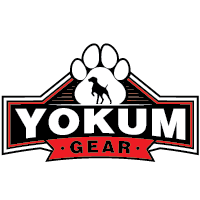Training a new puppy to use puppy pads can be a practical and convenient solution for pet owners, especially those living in apartments or areas with extreme weather conditions. Puppy pad training helps to manage accidents and ease the transition to outdoor potty training. Here are some effective tips to help you successfully training your puppy to use puppy pads.
Choose the Right Location
Select a designated area in your home where you want your puppy to use the puppy pads. This location should be easily accessible to your puppy and away from their sleeping and eating areas. Consistency is key, so make sure this spot remains the same throughout the training process.
Introduce the Puppy Pads
Introduce your puppy to the puppy pads by placing them in the designated area. Allow your puppy to sniff and explore the pads so they become familiar with them. During the initial stages, you can cover a larger area with pads to increase the chances of your puppy hitting the right spot. Gradually decrease the covered area as your puppy becomes more consistent.
Establish a Routine
Creating a regular schedule for feeding, playtime, and bathroom breaks will help your puppy understand when and where they are supposed to use the puppy pads. Take your puppy to the designated area right after waking up, after meals, and during playtime lapses as these are times they are most likely to need to relieve themselves.
Use Positive Reinforcement
Reward your puppy every time they successfully use the puppy pads. Positive reinforcement such as treats, praise, and petting will encourage them to repeat the behavior. Avoid punishment if they have accidents outside the pads, as this can cause fear and anxiety, making the training process longer and more stressful.
Watch for Signs
Pay close attention to your puppy’s behavior. Signs such as sniffing the floor, circling, or whining may indicate that they need to relieve themselves. When you notice these signs, promptly guide them to the designated puppy pad area.
Use a Crate
Crate training can be a valuable tool in potty training. Puppies naturally avoid soiling their sleeping area, so using a crate can help them control their bladder until you can take them to the puppy pad. Ensure the crate is the right size – large enough for your puppy to stand and turn around, but not so large that they can create a separate bathroom space.
Transition to Outdoor Training
Once your puppy consistently uses the puppy pads, you can begin to transition to outdoor potty training. Start by moving the puppy pad closer to the door and eventually outside. Gradually increase the time your puppy spends outdoors until they are comfortable using the outdoors as their primary potty area.
Be Patient and Consistent
Puppy pad training requires patience and consistency. Each puppy learns at their own pace, so be prepared for occasional setbacks. Stay consistent with your training routine and positive reinforcement to help your puppy succeed.
Keep the Area Clean
Maintain cleanliness in the designated puppy pad area by regularly changing the pads and cleaning any accidents promptly. Puppies are more likely to use a clean surface, and a fresh pad will help prevent any foul odors from developing.
By following these effective puppy pad training tips, you can help your puppy learn where and when to relieve themselves, reducing accidents and creating a harmonious living environment. Remember, with patience, consistency, and positive reinforcement, your puppy will quickly learn to use their puppy pads successfully.

